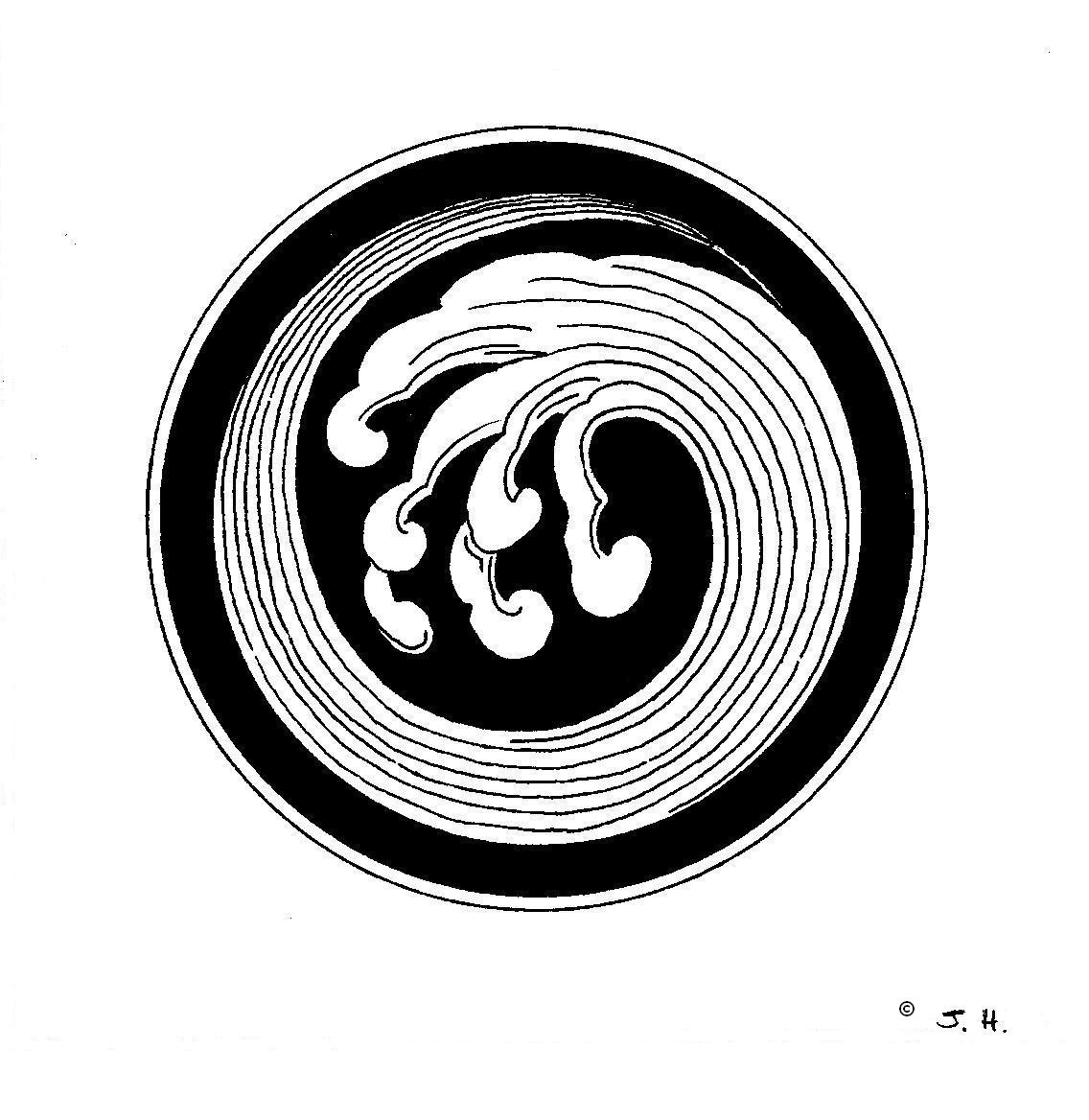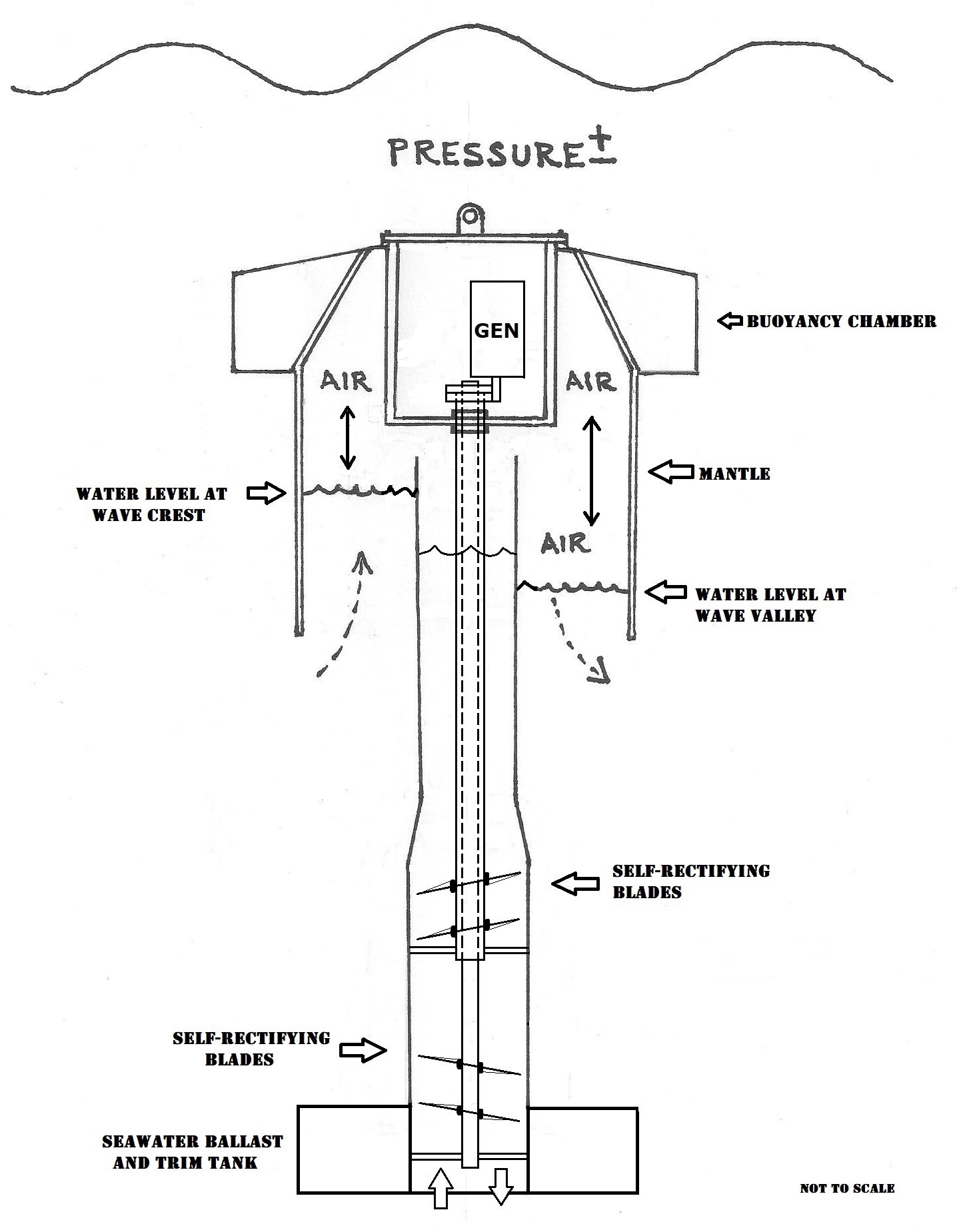
.jpg)
Competing Technologies Compared
The following information compares four main competing designs for the Hanna Subsurface Buoy. For a full description of the Hanna design click HERE.
AWS Ocean Energy (www.awsocean.com) vs Hanna
The Scottish company, AWS Ocean Energy, describes a two-body subsurface buoy where the two main components are axially aligned. The upper section oscillates up and down along a vertical plane. This reciprocating component moves separately from the lower portion which is anchored to the sea floor. Both the upper and lower structures are connected by a rolling flexible membrane and a tubular pneumatic shaft that acts as a spring for the moving upper section. Adjacent to the spring mechanism is a hydraulic pumping cylinder that serves as the PTO which drives an electric motor. The variable weight of passing surface waves exerts the hydrodynamic force to physically move the buoy's upper portion in order to energize the linear hydraulic PTO. The design requires a moderate to heavy sea state to achieve the necessary excitation force to move the AWS buoy's upper section. This is because a resistive force is created by its pneumatically-loaded spring component. The hydraulic pump also resists movement and lowers the buoy’s efficiency. The use of hydraulic fluid (even "bio-degradable" fluid) poses a risk to sea life. The flexible membrane can fail due to stress fatigue resulting in leakage. The AWS design has "end stops" that can damage the internal structure.
The Hanna buoy is different. It also has two main components but the design is much simpler because the upper and lower structures are rigidly connected to each other. There are no "end stops". The entire buoy structure is attached to the sea floor and kept in a semi-vertical position by a three-point catenary anchor system. The pressure of passing waves does not have to physically move the buoy’s upper section as with the AWS design. The only kinetic force driving the Hanna buoy’s PTO is the internal fluctuating air/water interface between the upper mantle and the lower acceleration tube. There are no internal forces that will dampen the buoy’s response to the pressure of passing waves. The Hanna system offers two optional primary PTO drives: (1) It can use its oscillating air/water column to act as an air piston to drive the Hanna self-rectified turbine PTO or (2) the internal oscillating water column will hydrodynamically spin the Hanna coaxial impeller drive.
Because the entire Hanna design is below the surface and stationary, it does not require expensive and complicated electronic mechanisms for damping or spring controls. The Hanna buoy captures the full spectrum and amplitude of omni-directional waves. Complex phase controls such as electronic algorithms, mechanical latching and braking mechanisms are completely unnecessary. The Hanna design is less complicated.
The AWS design is heavy and complex (expensive). The Hanna device is simpler and can be built lighter. The Hanna subsurface power buoy is more versatile because it offers two different self-rectified PTO drives. The Hanna buoy uses an OWC-type acceleration tube which harvests 100% of a wave's sinusoidal motion. This video link shows an early tank test: https://youtu.be/Z2chGWLS1IA
SYMPHONY Wave Power (www.symphonywavepower.com) vs Hanna
The Dutch company's buoy, "Symphony" shares operational cues from the AWS device. It is a tethered, two-piece subsurface buoy that uses the weight of passing waves to alternate a volume of air and water which is contained between the buoy’s two main components, the cap and lower shell. Two double-acting flexible rubber membranes are used between the two sections. The membranes contain a volume of air and water. The weight of a passing wave will push down on the cap which will again rise as the wave passes by. This pumping action draws the contained water back and forth through a novel turbine which spins a direct drive generator.
Unlike the Hanna device, the Symphony turbine and generator must reverse direction at every wave cycle which is inefficient. The two optional Hanna PTOs efficiently spins its generator continuously in one direction. The Symphony's flexible membranes are expensive and might potentially leak. Like the AWS buoy, the weight and complexity of the Symphony buoy makes it expensive to build and maintain.
CorPowerOcean (www.corpowerocean.com) vs Hanna
While the Swedish CorPower buoy is not a submerged device, their PTO is nearly identical to the Hanna "MultiDrive" PTO. (The MultiDrive patent, 8,745,981, has been assigned). Their patent application was filed after the Hanna invention. Like the Hanna design, CorPower’s PTO drives two back-to-back flywheels. But unlike the Hanna patent, the CorPower flywheels do not include one-way bearings which helps reduce shock loading and maintains smooth, continuous angular momentum at the top and bottom of each stroke. Lab tests demonstrated that the efficiency of a mechanical PTO like the Hanna design, is increased up to 80% when it has flywheels that engage and disengage due to its one-way bearings. The Hanna PTO has less resistance and puts out more power by driving multiple smaller generators.
Waves4Power (www.waves4power.com) vs Hanna
Another Swedish firm, Waves4Power, offers a surface buoy with similar design characteristics to the Hanna subsurface buoy. Both buoys use an acceleration tube which drives an internal float (piston). The acceleration tube and float arrangement is a proven system that has been validated in sea trials over many years. The internal float in the Waves4Power design drives a hydraulic PTO. Petronas, the hydraulic fluid manufacturer says "Do not discharge (the hydraulic fluid) into drains, soil or water". There is a potential risk to the environment should any of its pressurized valves and fittings spring a leak. Their system is complex and uses an hydraulic accumulator to store energy and fluid under pressure. The Waves4Power buoy has low energy conversion efficiency (wave to electric) because of large energy losses seen in hydraulic systems. The Hanna buoy is safer for the environment and can use either of its two simple PTO drives to generate clean energy. Because the Hanna system is less complicated, it is less expensive to manufacture and maintain. Therefore, the Hanna design has a lower LCOE than the other designs noted above.

.jpg)
Hanna Subsurface Buoy with two PTO options: Coaxial Impeller Drive and Coaxial Turbine Drive.
View Subsurface Buoy wave tank demo: https://youtu.be/Z2chGWLS1IA
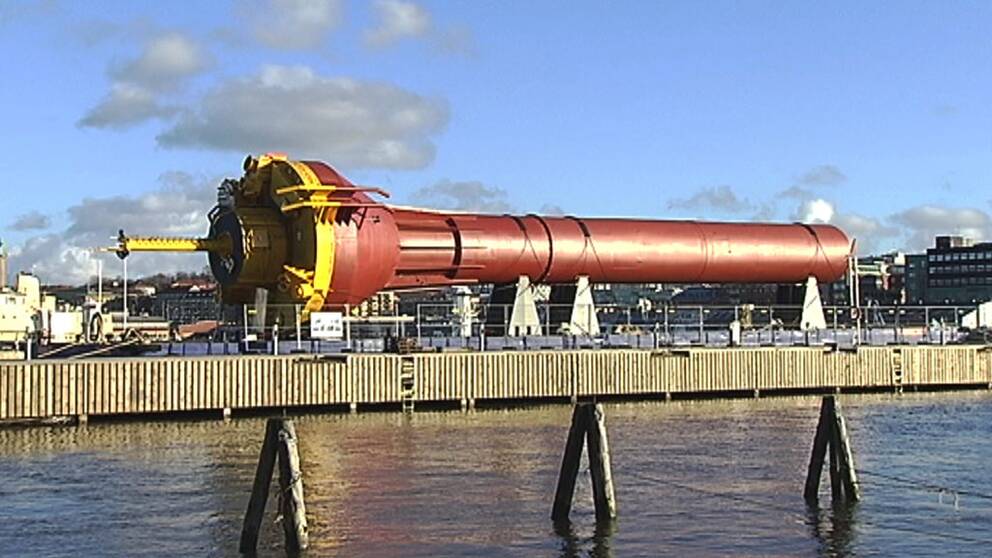
Waves4Power Surface Buoy with internal float and accelerator Tube
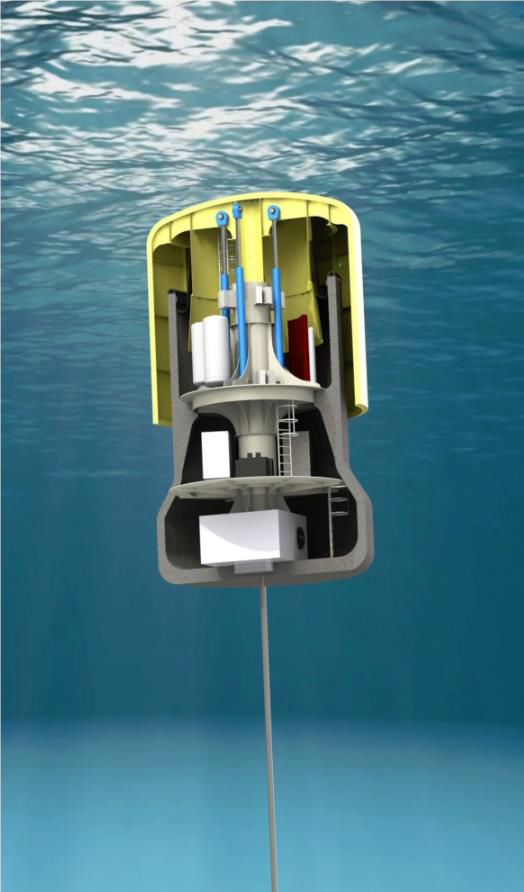
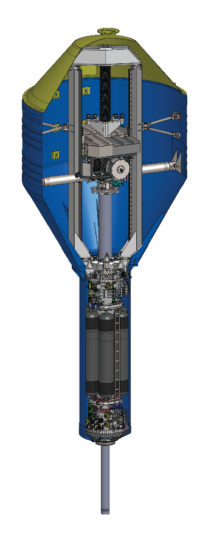
AWS Ocean Energy's subsurface buoy (left) and CorPower Ocean's surface buoy (right)
The CorPower mechanical PTO drive (above)
The CorPower PTO design is similar to the assigned Hanna MultiDrive PTO, U.S. patent 8,745,981
View the Hanna MultiDrive “Proof Of Concept” video: https://youtu.be/uwsm-FWjlQE
SYMPHONY Principle of Operation
SYMPHONY Main Components
The Hanna subsurface buoy has a gravity-based single point, seawater-ballasted anchoring system. Or an optional three-point catenary anchorage. The subsurface buoy can be driven either by the Hanna designed coaxial OWC turbine PTO or the coaxial impeller PTO option. Simplicity of design is the key to low LCOE and prolonged service.
